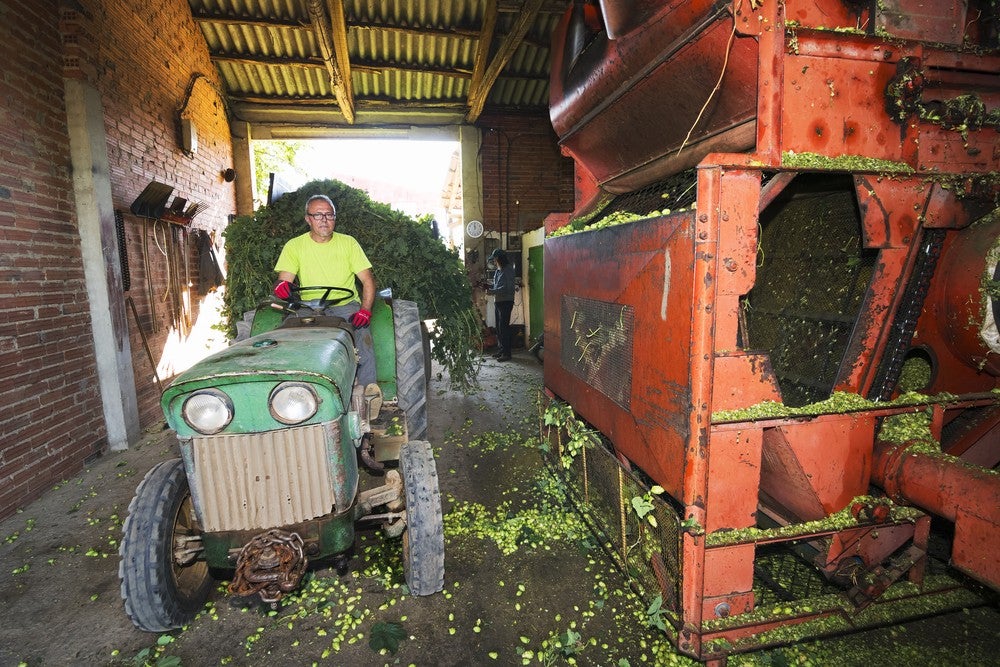Last month, after several consecutive years of double-digit growth in craft-beer sales and fears about a possible hop shortage, farmers in Yakima Valley, Washington, the nation’s largest hop-farming region, reported a possible surplus in the crop. Farmers anticipated a 15 to 18 percent growth in demand, while craft beer grew by only 5 to 6 percent, leaving them with excess crop yields.
After years of skyrocketing in popularity, craft beer is beginning to plateau as America’s taste for microbrews appears to be nearing its saturation point. In fact, the market trends have led some to wonder whether craft beer might approaching the end of its heyday.
But amid all the market uncertainty, craft beer continues to be a blessing for independent farmers — especially for those outside of the Pacific Northwest, where sales are still on the rise and production is ramping up to meet the demand. After all, the craft beer market is growing, albeit less quickly than some had anticipated. And the slowdown will likely be offset by America’s increasing appetite for IPAs and other hoppy beers that require more hops per unit of production.
“Local hop farms continue to pop up all across the country,” says Bart Watson, chief economist for the Brewers Association, a craft brewing advocacy group. “And you’ll likely hear more about that going forward.”
Larry Becker, a 64-year-old hop farmer in Montello, Wisconsin, grew up on a dairy farm — “I’ve never known a day my family didn’t milk cows,” he says — and was a dairy farmer himself until he began growing hops in the late 2000s amid the rise of the craft beer trend in the Midwest. In 2010, he helped found the Wisconsin Hop Exchange, a co-operative of hop farmers who pool their crop yield and sell it collectively. At its inception, the group had six farmers. Now, it has 80, and they sell 15 times as many hops as they did at the start.
“Actually, this year, sales and production exceeded expectations,” Becker says. Sales were actually so high that the Exchange had to dip into its leftover crop supply from the year before to meet demand. “And there’s potential to grow significantly more,” Becker adds.
There’s similar growth for small hop farmers in Northern California, according to Michael Stevenson, president of the NorCal Hop Growers Alliance, a trade group of beginning hop farmers north of the Bay Area.
Both Becker and Stevenson attribute the growth of their groups to the number of small to medium-sized breweries that continue to spring up in their respective areas, and those breweries’ demand for locally grown hops. NorCal Hop Growers Alliance focuses on “neighborhood craft breweries” that produce under 2,000 barrels year, for instance, Stevenson says.
“The customers we’re targeting are still a growth market: the small craft brewers,” Becker says. “They’re opening up all the time.”
Much like the farm-to-table food movement — in which diners want to know where their food came from and how it was grown — there’s a farm-to-pint beer movement afoot, with brewers increasingly interested in sourcing local, ethically grown hops. “Part of it is people trying to get cleaner products, and knowing whether pesticides and herbicides are in their food,” Stevenson says. “Working with a farm in our group, you know that this beer came from down the road, that there’s nothing shady going on.”
It also helps local craft breweries differentiate themselves from larger, more established craft brew brands such as Goose Island, Sierra Nevada and Lagunitas. Large hop farms, such as those in Yakima Valley, typically sell their hops to warehouses, which in turn sell them to breweries. Small hop farmers, on the other hand, find success selling their crops directly to small brewers — often the very same day they’re picked off the plant — allowing the brewers to market their brewing process as superior to the faceless supply chains of larger beer-makers.
It’s not surprising, then, that the Wisconsin Hop Exchange only sells to small and medium-sized breweries that distribute locally, such as Potosi, O’so, Great Dane and Octopi. “Our hops fit into what they’re trying to sell, which is local craft beer,” Becker says.
Ironically, one of the biggest threats to the small hop farmer is success itself. Many craft brewers dream of achieving the kind of outsize success of, say, Ballast Point, the San Diego-based craft brewer that sold to beverage industry giant Constellation in 2015 for $1 billion. But when a craft brewer becomes too successful, they have to buy their hops from an equally large producer, not the small, independent suppliers they used before.
“Not every brewer can sell out, though,” Stevenson says. “So I think there will continue to be plenty of opportunities for small-scale breweries and small-scale hop farms.”
